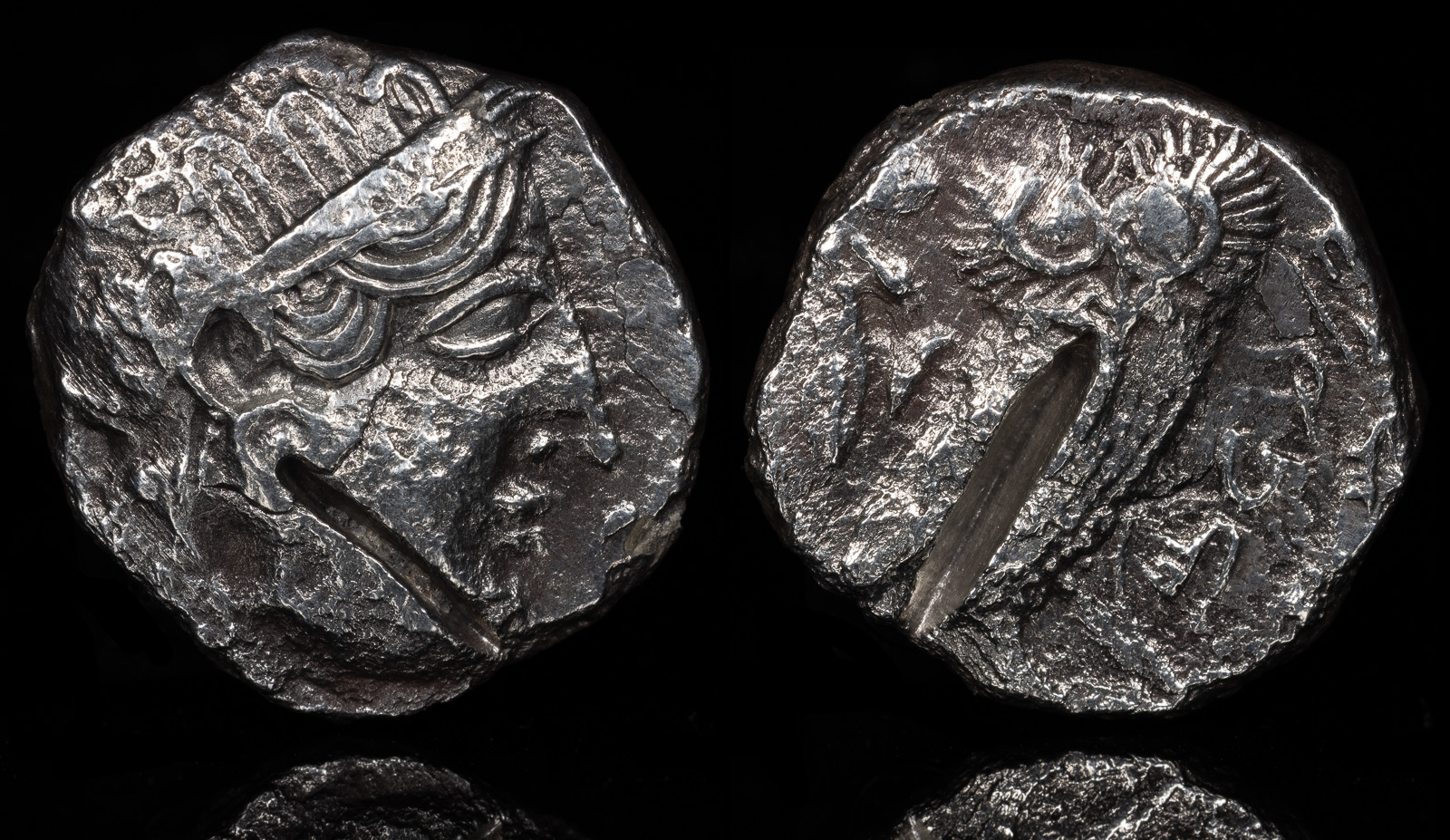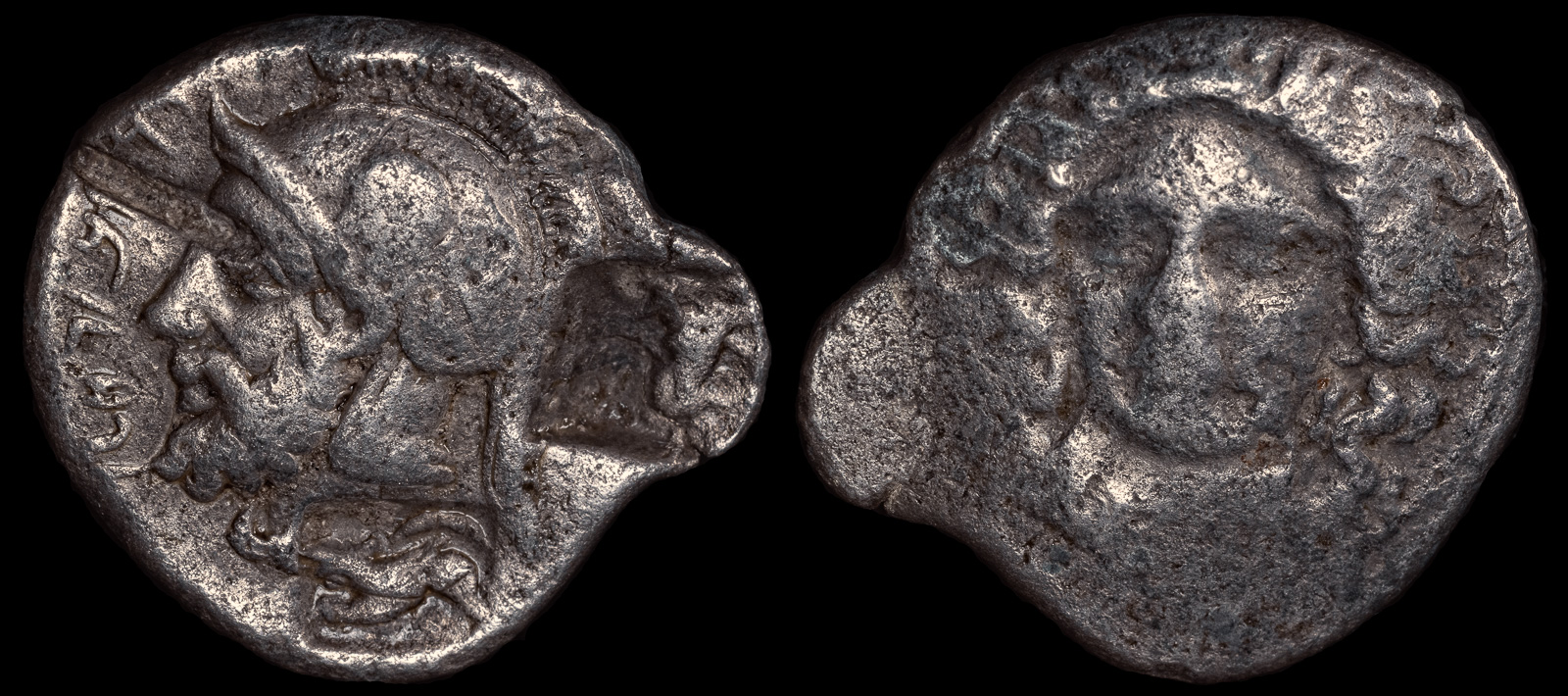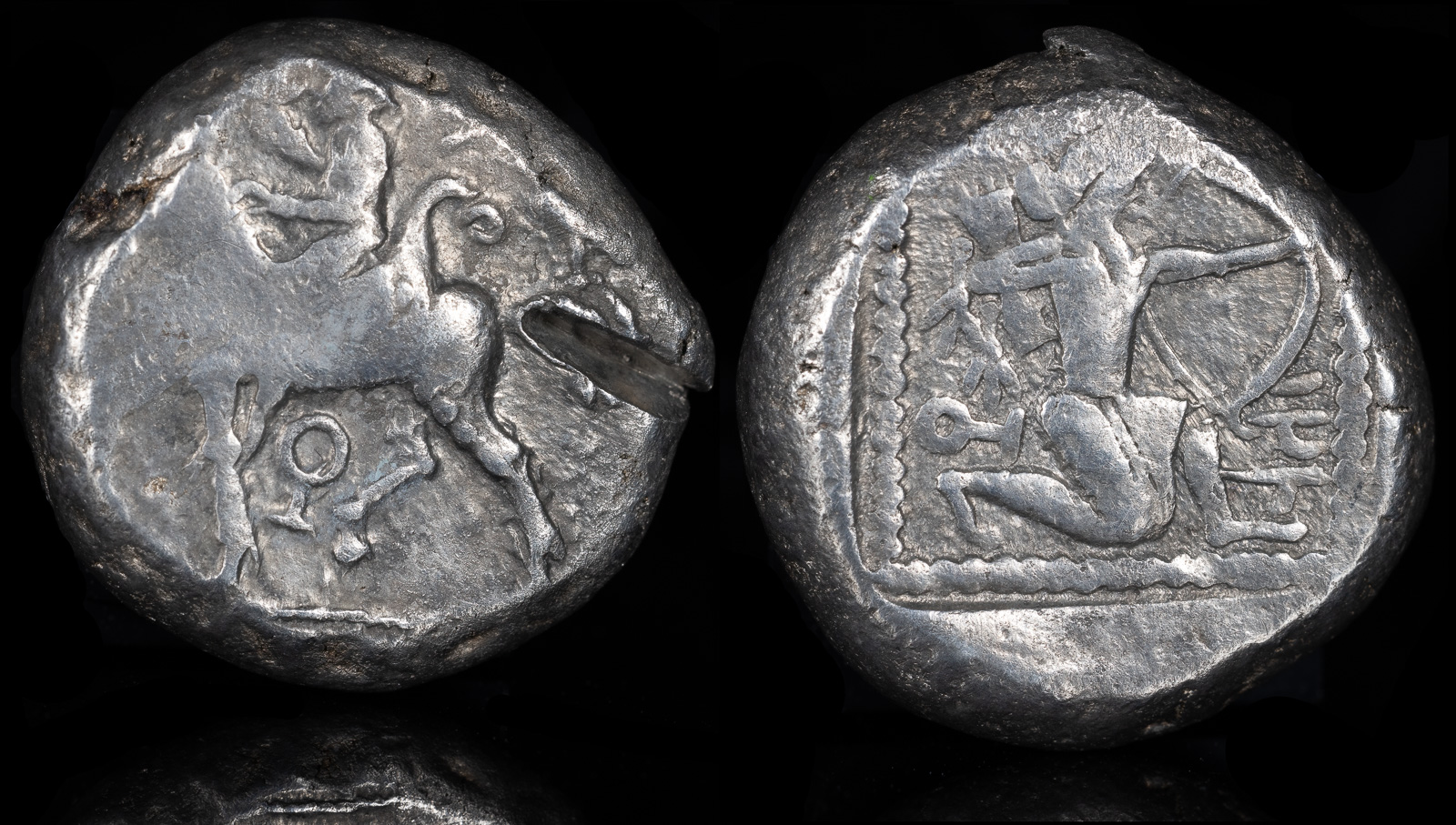Test Cut
View All Tags
Authentication and Validation of Metal Content: The primary purpose of test cuts was to confirm that a coin was made of the metal it was supposed to be made of, usually gold, silver, or copper. Ancient coins were often struck with a high value due to their metal content, and counterfeit coins made of inferior metals or alloys could easily circulate. By making a small cut, the person testing the coin could examine the core material to see if it was the correct metal. For example, in silver coins, a cut would reveal whether the coin was made of solid silver or if it had been mixed with cheaper metals.
Detecting Fraud and Counterfeits: Counterfeiting coins was a common problem in the ancient world, just as it is today. As a result, ancient merchants and traders were cautious and frequently tested coins to avoid accepting forgeries. The test cut allowed for a quick check of a coin’s integrity. These test cuts helped preserve the financial stability of a region by ensuring that only legitimate coins circulated in the economy. Coins with test cuts were generally seen as less valuable in their market value but could still circulate, depending on how trustworthy their composition appeared.
Quality Control by Mints: Some ancient mints would test the quality of their coins through test cuts, especially when producing high volumes of coinage. A mint might cut or file a small portion of a coin to check the metal composition and ensure that the metal mixture was correct or that the minting process was being carried out properly. In some cases, mint authorities may have also performed tests on the coins to ensure that they met the prescribed weight or other specifications required for the currency.
Secondary Use as Currency: In some instances, coins with test cuts may have been used in trade but had a reduced value due to their tampered appearance. However, these coins were not necessarily rejected from circulation; rather, they often continued to be used for transactions in the economy, especially when there was no other readily available currency. The test cut was a mark of authenticity that informed buyers and sellers of the coin’s quality and worth, even with a small deduction in value.

EGYPT, Achaemenid Province. Artaxerxes III Okhos. As Pharaoh of Egypt
343/2-338/7 BCE
AR Tetradrachm (26mm, 15.07 g, 9h)
Imitating Athens. Head of Athena right, with frontal eye, wearing earring and crested Attic helmet decorated with three olive leaves over visor and a spiral palmette on the bowl
Owl standing right, head facing; olive spray and crescent to left, “Artaxerxes Pharaoh” in two-line Demotic A script to right.
two test cuts on either side, obv. punch.
Van Alfen Type I, 1–5 = Price, More 147–9; O. Mørkholm, “A Coin of Artaxerxes III” in NC 1974, pl. I, 7–8; cf. Meadows, Administration 329; Mildenberg, Münzwesen 124.

Cilicia, Tarsos: Pharnabazos
379-374 BCE
AR stater, 24mm, 10.3 g
Female head facing
Bearded and helmeted head left, test cut and two countermarks, one of bull crossing (with crescent?) and one of wolf leaping with crescent at rear (Callatay countermarks B and C)
SNG Cop. 266

Cilicia, Tarsos
AR Stater 10.62g, 20mm, 9h.
Circa 440-400 BCE
Horseman (Syennesis?) riding to left, wearing kyrbasia, holding lotus flower in right hand and reins in left, bow in bowcase on saddle; key symbol below horse, eagle(?) standing to left behind / Archer in kneeling-running stance to right, quiver over shoulder, drawing bow; key symbol behind, ‘trz’ in Aramaic on the lower right; all within dotted border within incuse square
BMC -; SNG von Aulock -; SNG Copenhagen -; SNG Levante -; SNG BnF -, cf. 213 for types = Casabonne Type D2, pl. 2, 10 = MIMAA pl. V, 6 = Traité II, 523